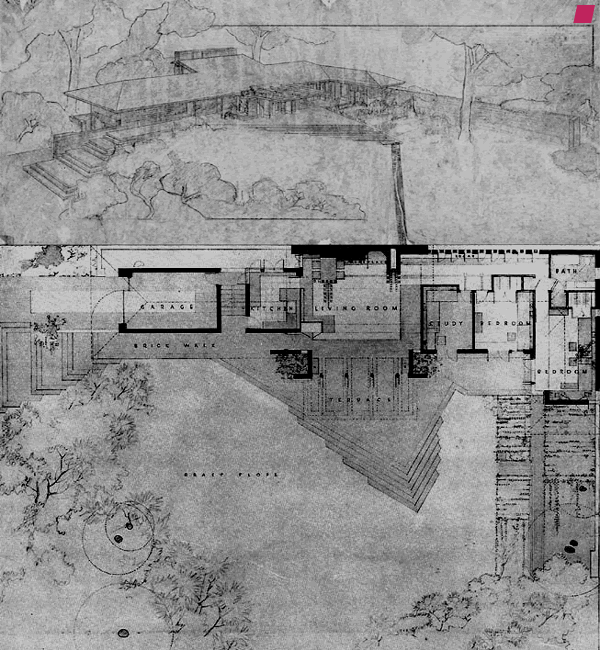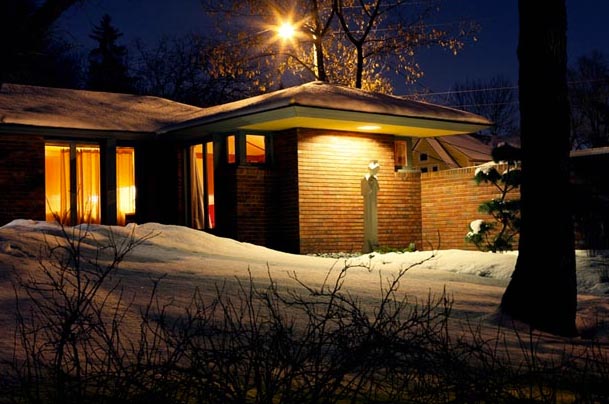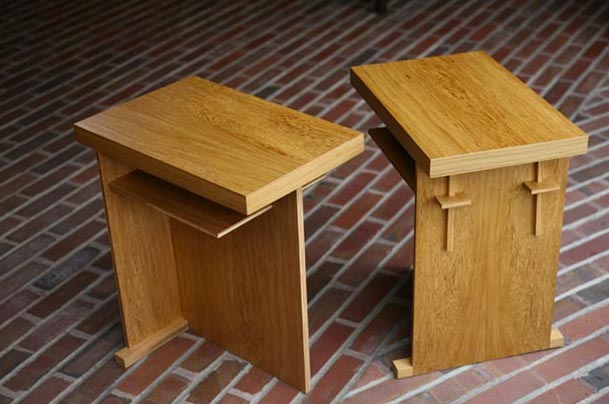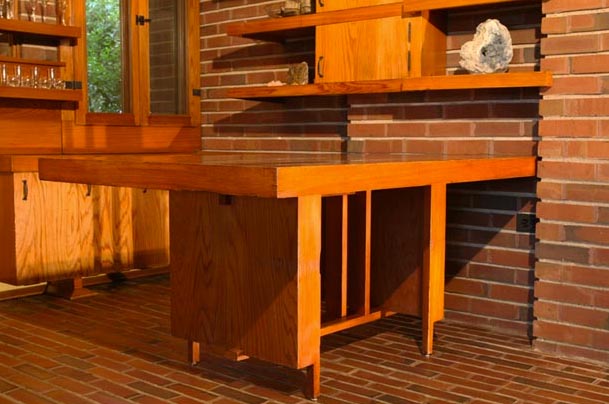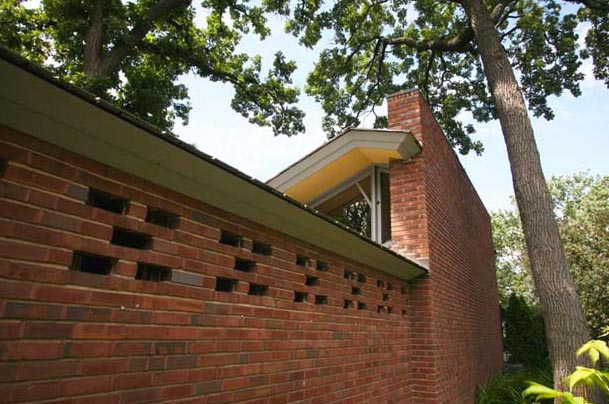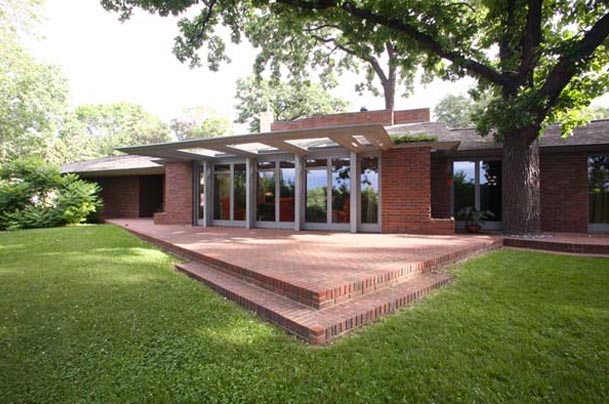In 1932, Amelia Earhart becomes the first woman to fly a TransAtlantic solo flight. The Lindberg baby is kidnapped. Franklin Delano Roosevelt is elected to office and proposes his “New Deal” to the American public. 24% unemployment and wages drop 60% since 1929. Due to work shortages, the five-day work week becomes the norm. Prohibition is repealed. 300 million tons of soil blows away during a prolonged “black blizzard” in the Plains states. An epidemic crime wave grips the nation causing the FBI to issue its list of public enemies including: “Baby Face” Nelson, “Pretty Boy” Floyd, “Ma” Barker and Bonnie and Clyde. By the time the house is completed in 1934, the above-mentioned public enemies have been shot and killed.
Malcolm Willey was Assistant to the President at the University of Minnesota in 1932. He and his wife Nancy were planning to build a house, and a hairdresser friend of Nancy’s suggested they build a “catalog house”. They were considering doing so when, according to Nancy Willey, Malcolm brought home a copy of “An Autobiography” from The University Bookstore. Nancy promptly devoured it. Wright’s book sent her “sky high”. She was so taken by Wright’s ideas that she wrote to him asking if he’d consider designing a small house for them. Unbeknownst to Nancy, Wright hadn’t a single commission at the time. To bring in much needed capital, he had been busy lecturing, writing and had, together with Olgivanna Wright, just established the Taliesin Fellowship. As fate would have it the time was right for the Willey’s dream. They had a small nest egg at a time when the American economy lay in ruins. Frank Lloyd Wright had 25 fresh young apprentices to house, feed and train, with no paying work in his office.
As Neil Levine states in his book, The Architecture of Frank Lloyd Wright, “If the Willey House was the prototype for the Usonian House, the Willeys were the protoypical clients.…As clients, he and his wife, Nancy, were the first of a series of forward-looking, middle class academics and journalists that would include the Jacobses, the Lewises, the Popes, the Hannas, the Lusks, the Bairds, the Rosenbaums and Alma Goetsch and Katerine Winkler. They constituted a very different and more varied type from the upper middle class and wealthy group of businessmen and women who generally hired Wright in the years prior to the crash.”
Willey House 1, as the initial plan is known, was a two-story design of brick and cypress. Ideas from this design surface a few years later in the Lloyd Lewis House. Building cost estimates on the house consistently came in at double the Willey’s budget. After exhausting all options, Nancy Willey wrote to Wright pleading, “I don’t want a 17 thousand dollar house even at 12 or 10 thousand dollars. I want an 8 to 10 thousand dollar house at 8 to 10 thousand dollars. Can I have it?...We place such a high value on having a Frank Lloyd Wright house that we are unwilling to poison our joy in it by having too large a debt on it, and we will always feel that way.” In response, he wrote, “Dear Nancy Willey: We’ll try again. It seems the simplest way.”
In a letter to apprentice Henry Klumb, Wright expressed, “Have redesigned the Willey’s house and they will now get poetry instead of drama. Drama always comes high, I guess.”
Malcolm and Nancy moved in to their new house in December 1934—minus steps, terrace and garden wall due to the lateness of the season. Marking the occasion, Nancy wrote to Wright, “We are terribly happy in it. It is more thrilling than we ever imagined it could be, even in our most exhalted moments!” In the years since, the house has hosted Mr. and Mrs. Wright, most of the early Taliesin apprentices, as well as several potential clients of Frank Lloyd Wright. Alfred Dahleen, the Willey’s builder, so impressed Wright that he was sent to Dallas to bid on the Stanley Marcus house, which was, in the end, never built.
In the 1960s, the Burrises, the second owners, hosted political rallies for Hubert Humphrey. Even then, the house was a magnet for tourists, occasionally bus loads at a time (not advisable on this cul-de-sac). One famous bit of local lore has it that Interstate Highway 94 was rerouted to preserve the house. The story is unsubstantiated; however, the freeway does indeed bypass the house. After Russell and Jane Burris and three children outgrew the house, they offered it to friends Lu and John Howe, a Wright apprentice, who deliberated but declined in order to build a home of their own. The Willey House was instead sold to Harvey Glanzer, owner of the A.D. German Warehouse in Richland Center, Wisconsin, who served as steward for 30 years. During this period, the house was lived in sporatically.
